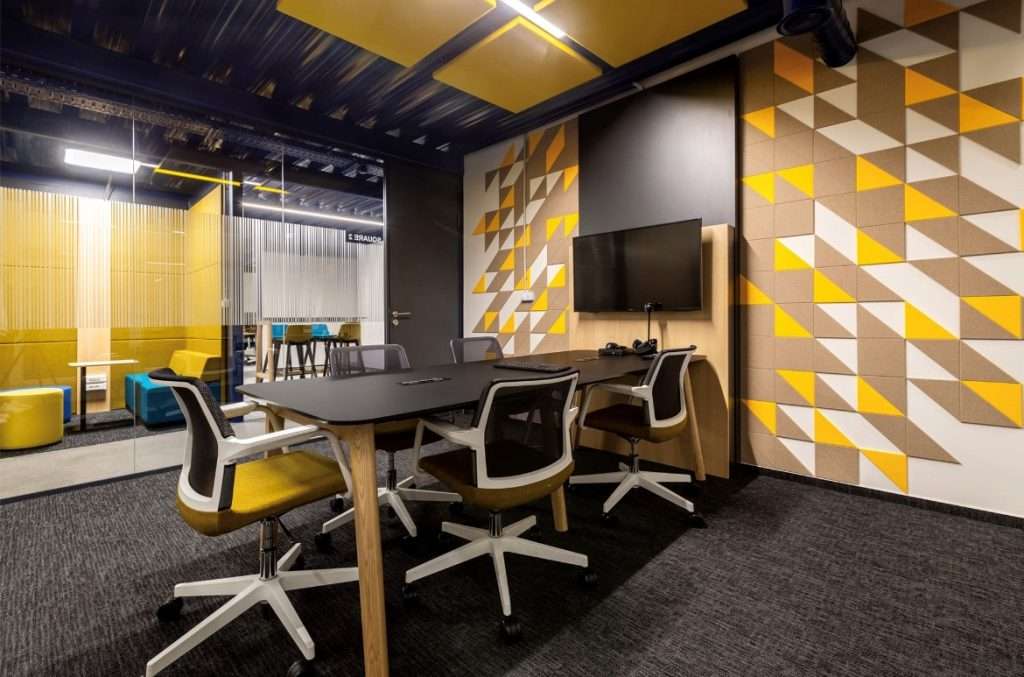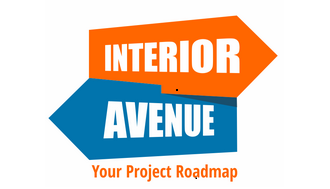The Biggest Challenges of the Hybrid Workplace Model in Tempe, AZ
The hybrid workplace model has become increasingly popular in Tempe, AZ, as businesses adapt to the changing work landscape post-pandemic. While this model offers greater flexibility and access to a diverse talent pool, it also brings unique challenges that companies must address to remain productive and competitive. From managing remote teams to overcoming technology gaps, the obstacles can be daunting. This article explores the biggest challenges of the hybrid workplace in Tempe, AZ, and provides practical strategies to navigate them successfully.

Understanding the Hybrid Workplace Model in Tempe, AZ
Why Tempe Businesses are Shifting to Hybrid Work
Tempe’s dynamic business environment, driven by its growing tech and service industries, is rapidly adopting the hybrid work model. The pandemic accelerated the shift to remote work, and now many companies are seeking a middle ground that allows flexibility for employees while maintaining office operations. The hybrid model provides benefits like reduced overhead costs and access to a broader talent pool, allowing businesses to recruit talent from outside the immediate area. For employees, it means improved work-life balance and less time commuting.
However, implementing a hybrid workplace comes with its own set of challenges. Business leaders in Tempe are striving to find the right balance between flexibility and maintaining the productivity and collaboration that in-person work often fosters.
What Makes Tempe’s Hybrid Workplace Unique?
Tempe’s unique economy, urban layout, and commuter patterns add a layer of complexity to the hybrid work model. The city’s workforce includes a mix of university students, tech professionals, and service industry workers, creating a diverse set of needs and expectations around work environments. Additionally, public transportation, biking paths, and parking availability all influence how easily employees can transition between home and office work.
Tempe’s vibrant business district is also characterized by high-density office spaces. Many businesses that once relied on face-to-face interactions now need to integrate virtual collaboration into their operations. Thus, Tempe’s approach to hybrid work must be tailored to its specific geographical, economic, and workforce dynamics.
The Core Challenges of the Hybrid Workplace Model in Tempe, AZ
Balancing In-Office and Remote Work Schedules
Creating a balanced schedule that accommodates both in-office and remote workers is one of the primary challenges. In Tempe, businesses are dealing with varying employee preferences for remote or in-office work. Some employees thrive in a remote setting, while others feel more productive and connected in an office environment. Finding a balance that meets everyone’s needs without compromising business operations can be tricky.
For example, coordinating team meetings can become complicated when half the team is in the office, and the other half is working remotely. These scheduling issues can lead to delays, reduced collaboration, and potential project bottlenecks.
Strategies for Scheduling Balance
- Staggered Workdays: Implementing staggered workdays can help reduce the number of employees in the office at one time, making it easier to adhere to social distancing measures.
- Shared Calendars: Utilize shared calendars to keep everyone informed about in-office and remote work schedules.
- Digital Coordination Tools: Use project management and communication tools like Slack, Asana, and Microsoft Teams to facilitate coordination across different work environments.
Communication Gaps and Collaboration Hurdles
With part of the workforce working remotely, communication gaps are a common problem. Physical separation can lead to misunderstandings, delays, and feelings of isolation. Additionally, the reliance on digital tools can sometimes make communication feel less personal and effective.
For Tempe businesses, collaboration is key to maintaining a competitive edge, especially in the city’s thriving tech and service sectors. Hybrid work can make brainstorming sessions, problem-solving, and spontaneous conversations more difficult to facilitate.
Bridging Communication Gaps
- Digital Collaboration Platforms: Invest in digital tools like Zoom, Microsoft Teams, and Trello that facilitate seamless communication and collaboration.
- Regular Virtual Check-ins: Schedule frequent virtual meetings to ensure consistent communication between remote and in-office employees.
- Clear Communication Guidelines: Establish communication norms and guidelines to help employees know when and how to communicate effectively.

Technology and Infrastructure Challenges
Uneven Access to Technology Among Employees
In a hybrid workplace, technology is the backbone of productivity. However, not all employees have the same access to technology when working from home. Some may lack high-speed internet, while others might not have advanced office equipment or the necessary software. This disparity can lead to inefficiencies and frustrations, impacting overall productivity.
Investing in Technology for Hybrid Work
- Company-Provided Hardware: Consider providing employees with essential hardware, such as laptops, monitors, and ergonomic office furniture, to create a more conducive remote working environment.
- Software Licenses: Ensure that all employees have access to necessary software and tools to work effectively from any location.
- IT Support: Offer robust IT support to troubleshoot technical issues, ensuring that remote workers have the same level of support as in-office employees.
Data Security and Privacy Concerns
Handling sensitive company data across multiple work environments introduces security risks. Hybrid workforces are particularly vulnerable to cyber threats, as employees may access company systems through personal devices or unsecured home networks.
Enhancing Security in a Hybrid Workplace
- VPNs: Require employees to use a virtual private network (VPN) when accessing company networks remotely.
- Multi-Factor Authentication: Implement multi-factor authentication to add an extra layer of security.
- Data Encryption: Use data encryption to protect sensitive information transmitted over the internet.
Managing Employee Engagement and Well-being
Maintaining Company Culture and Team Morale
A strong company culture is essential for employee engagement, but it can be challenging to maintain in a hybrid environment. Remote employees may feel isolated and disconnected from their colleagues, which can impact team morale and productivity. This issue is particularly pronounced in Tempe, where many companies have strong, in-person cultures rooted in the city’s close-knit business community.
Building a Strong Hybrid Culture
- Virtual Team-Building Activities: Host virtual team-building activities to foster connection among remote employees.
- In-Person Meetups: When feasible, organize periodic in-person meetups or team events to strengthen bonds and reinforce company culture.
- Recognition Programs: Implement employee recognition programs to celebrate achievements and boost morale.
Monitoring Employee Well-being
Remote work can blur the lines between personal and professional life, leading to burnout and stress. It’s important for Tempe businesses to monitor employee well-being and promote a healthy work-life balance.
Supporting Well-being
- Wellness Programs: Offer wellness programs that address both mental and physical health, including access to counseling services, fitness programs, and flexible work schedules.
- Local Resources: Utilize Tempe’s local resources, such as community support programs, to provide additional support to employees.
Navigating Legal and HR Considerations in a Hybrid Model
Compliance with Labor Laws and Regulations
Hybrid workplaces must comply with Arizona’s labor laws, including regulations related to work hours, overtime, and workplace safety. Employers need to create clear policies that address these legal requirements, especially when employees work from multiple locations.
Developing Hybrid Work Policies
- Establish policies that clearly define work hours, overtime rules, health benefits, and employee rights in a hybrid work environment.
- Ensure that policies comply with Arizona’s labor laws and workplace safety regulations.
Addressing Compensation and Benefits Disparities
Ensuring equitable compensation and benefits for both remote and in-office workers can be complex. Employees may have different cost-of-living expenses depending on their work location, which can affect compensation expectations.
Equitable Compensation Strategies
- Location-Neutral Pay Structures: Implement pay structures that are fair and consistent regardless of an employee’s work location.
- Customized Benefit Packages: Tailor benefits to address the needs of both remote and in-office employees, such as offering stipends for home office equipment.

Solutions and Best Practices for Overcoming Hybrid Workplace Challenges in Tempe
Flexible Work Policies
To accommodate diverse employee preferences and maximize productivity, businesses should develop flexible work policies. This flexibility can involve allowing employees to choose their preferred work environment and schedule while aligning with business goals.
Investing in Employee Development
Providing ongoing training and professional development opportunities helps equip employees for success in a hybrid work model. Investing in skill development also ensures that both remote and in-office employees have the tools and knowledge they need to contribute effectively.
Utilizing Coworking Spaces in Tempe
Coworking spaces offer a flexible solution for remote employees who need a professional work environment. Tempe has several coworking spaces that provide access to meeting rooms, networking opportunities, and high-speed internet, allowing businesses to offer a mix of work environments without investing in additional office space.
Conclusion
The hybrid workplace model brings several challenges for businesses in Tempe, AZ, from managing schedules and communication to addressing technology disparities and employee well-being. However, with the right strategies and tools, these challenges can be overcome. By understanding the unique aspects of the Tempe business landscape and implementing best practices, companies can create a hybrid work model that supports both productivity and employee satisfaction, fostering a resilient and thriving workplace.
FAQs
Q1: What are the main challenges of hybrid work in Tempe, AZ?
The main challenges include managing remote work schedules, communication gaps, technology access disparities, maintaining company culture, employee well-being, and legal compliance.
Q2: How can businesses in Tempe address communication challenges in a hybrid model?
By using digital collaboration tools, establishing clear communication protocols, and conducting regular virtual meetings, businesses can bridge communication gaps.
Q3: What technology investments are necessary for an effective hybrid workplace?
Investments may include high-speed internet, company-provided hardware, cybersecurity tools, and software licenses to support remote work.
Q4: How do Tempe businesses maintain employee engagement in a hybrid setting?
Regular team-building activities, virtual meetups, and recognition programs help maintain morale and foster a strong company culture.
Q5: What legal considerations should Tempe businesses keep in mind with a hybrid work model?
Compliance with Arizona’s labor laws, health and safety regulations, and creating clear policies regarding work hours and employee benefits are key considerations.
Q6: Can coworking spaces in Tempe help address hybrid workplace challenges?
Yes, coworking spaces offer remote employees a professional environment, access to meeting rooms, and networking opportunities, providing a flexible solution.
Ready to transform your Southeast Valley workspace and create an environment that fosters creativity, collaboration, and productivity?
Contact Interior Avenue today for a free consultation! Our team of experts will guide you through the process of selecting the perfect furniture to elevate your office and propel your Southeast Valley business to new heights.
As you consider the needs of your office, both now and in the years to come, Interior Avenue represents a strategic partner capable of supporting your journey towards creating an ideal workspace. Whether you’re a startup looking to make a mark, a growing business planning to expand, or simply in need of refreshing your current office setup, Interior Avenue offers the solutions to meet your needs efficiently and stylishly. Let Interior Avenue be your guide to a more adaptable, affordable, and aspirational office environment in the heart of the Phoenix Southeast Valley.
For those looking for swift solutions without compromising on quality or budget, consider partnering with Interior Avenue. Renowned for their fast service and affordable options, they provide an array of office furniture tailored to modern business needs. We hope this guide offers clarity and guidance in your office furniture procurement process. Making the right choice can lead to a vibrant, efficient, and comfortable workspace, promoting well-being and productivity among employees.

We have 3 options to buy:
Purchase upfront– Pay upfront for your office furniture to be delivered and installed.
Rent to own– We help you break up the payments to help with cash flow. This service includes delivery and installation.
Subscription rental– Monthly payments that include delivery and installation and when your subscription is over we will take back the furniture and move it out of your office space for free.





Leave a reply